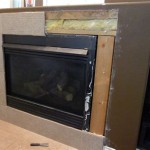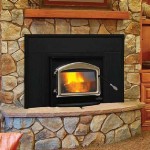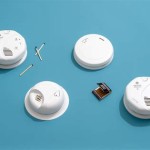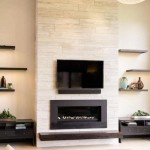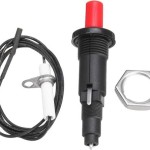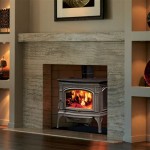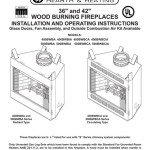Gas Fireplace Insert Venting Options: A Comprehensive Guide
Gas fireplace inserts offer an efficient and aesthetically pleasing alternative to traditional wood-burning fireplaces. A crucial aspect of their installation is proper venting, which ensures safe and efficient operation by expelling combustion byproducts. Choosing the correct venting option is essential for safety, performance, and adherence to local building codes. Several venting methods are available for gas fireplace inserts, each with its own set of advantages and disadvantages. This article provides a detailed overview of these venting options, enabling informed decision-making during the selection and installation process.
The primary purpose of venting a gas fireplace insert is to remove harmful gases like carbon monoxide, nitrogen oxides, and water vapor produced during combustion. Inadequate venting can lead to carbon monoxide poisoning, a potentially fatal condition. Proper venting also prevents condensation buildup, which can damage the fireplace insert and surrounding structures. Furthermore, efficient venting helps maintain optimal combustion within the fireplace, maximizing efficiency and preventing soot buildup.
Understanding Venting System Terminology
Before delving into specific venting options, understanding the terminology is crucial. Several terms are commonly used when discussing gas fireplace insert venting, and familiarity with them facilitates clear communication and accurate comprehension of installation guidelines. Some key terms include:
Vent Pipe: This refers to the physical pipe that carries the exhaust gases from the fireplace insert to the outside. Vent pipes are typically made of metal and come in various diameters and lengths.
Termination Cap: This is the component installed at the end of the vent pipe, usually on the roof or exterior wall, to prevent rain, snow, and debris from entering the venting system. It also helps to disperse the exhaust gases.
Vent Adapter: This component connects the fireplace insert to the vent pipe. It ensures a secure and gas-tight seal, preventing leaks of combustion byproducts.
Draft Hood: Used in some venting systems, the draft hood is a component located near the top of the fireplace insert that helps to regulate the flow of air and exhaust gases, preventing backdrafting.
Listed and Labeled: This signifies that the venting system has been tested and certified by a recognized testing agency, such as UL or CSA, and meets the safety and performance standards for its intended use. Always use listed and labeled venting components that are specifically designed for use with gas fireplaces.
Clearance to Combustibles: This refers to the minimum distance required between the vent pipe and any combustible materials, such as wood framing, drywall, or insulation. Maintaining proper clearance is crucial to prevent fire hazards.
Incorrect terminology or misunderstanding of these terms can lead to improper installation, compromising safety and performance. Consult with a qualified installer or refer to the manufacturer's instructions for clarification.
Types of Gas Fireplace Insert Venting Systems
Several venting options exist for gas fireplace inserts, each with its own installation requirements and limitations. The best option depends on the fireplace insert's design, the existing chimney infrastructure, and the specific building codes in the area. The most common venting systems are described below:
Direct Vent (DV): Direct vent systems are sealed combustion systems that draw air from outside the home for combustion and vent exhaust gases directly outside through a coaxial or concentric vent pipe. Coaxial systems use a pipe-within-a-pipe design, where the inner pipe expels exhaust gases and the outer pipe draws in fresh air. Concentric systems have two separate pipes that run parallel to each other. Direct vent systems are known for their safety and efficiency because they do not rely on indoor air for combustion, reducing the risk of carbon monoxide poisoning and drafts. They also allow for more flexible installation options, as they can be vented horizontally through a wall or vertically through the roof.
B-Vent (Natural Vent): B-vent systems, also known as natural vent or gravity vent systems, rely on the natural buoyancy of hot exhaust gases to vent them through a vertical vent pipe. These systems draw air from inside the home for combustion and require a continuous, unobstructed vent pipe that extends from the fireplace insert to the outside. B-vent systems are generally less expensive to install than direct vent systems, but they can be susceptible to backdrafting, especially in tightly sealed homes. They also require a taller vent pipe to ensure adequate draft. B-vent systems are typically used in older homes with existing chimneys.
Vent-Free (Ventless): Vent-free gas fireplace inserts do not require any venting. They use a special oxygen depletion sensor (ODS) to monitor the oxygen levels in the room. If the oxygen level drops below a safe threshold, the ODS shuts off the gas supply to prevent carbon monoxide buildup. Although vent-free fireplaces offer the convenience of easy installation and no venting requirements, they are subject to strict regulations and may not be permitted in all areas. They also produce water vapor as a byproduct of combustion, which can lead to moisture problems in the home. Additionally, some people may be sensitive to the combustion byproducts released by vent-free fireplaces.
Co-Linear Venting: Co-linear venting involves utilizing an existing chimney to run two separate vent pipes – one for intake air and one for exhaust. This method is often used when converting an existing wood-burning fireplace to a gas insert. It simplifies installation by avoiding the need for extensive chimney modifications.
Each of these venting options has specific installation requirements and is subject to local building codes. Choosing the right option depends on the existing chimney setup, the fireplace insert's specifications, and the homeowner's preferences. Consulting with a qualified HVAC professional is always recommended.
Key Considerations for Venting System Selection
Selecting the appropriate venting system for a gas fireplace insert involves several critical considerations. These factors impact the safety, efficiency, and longevity of the fireplace insert. Neglecting these considerations can lead to costly repairs or, worse, safety hazards. Key considerations include:
Fireplace Insert Manufacturer Specifications: The manufacturer's instructions are the primary source of information regarding compatible venting systems. These instructions specify the type of venting system required, the vent pipe diameter, the maximum vent length, and any specific installation requirements. Deviating from the manufacturer's instructions can void the warranty and compromise the safety of the installation.
Local Building Codes and Regulations: Building codes and regulations vary by location and dictate the permissible venting options for gas fireplaces. These codes may specify the type of vent pipe required, the minimum vent height, the clearance to combustibles, and other safety requirements. It is crucial to consult with the local building department or a qualified inspector to ensure compliance with all applicable codes.
Existing Chimney Condition (If Applicable): If utilizing an existing chimney, a thorough inspection of the chimney's condition is essential. Cracks, leaks, or deteriorated mortar joints can compromise the venting system's integrity and pose a safety hazard. The chimney may need to be relined or repaired before installing the gas fireplace insert. In some cases, the existing chimney may not be suitable for use with a gas fireplace insert, requiring alternative venting options.
Altitude: Altitude can affect the performance of gas appliances, including fireplaces. At higher altitudes, the air is thinner, which can affect the combustion process and the draft of the venting system. Some gas fireplace inserts may require adjustments or modifications to operate properly at higher altitudes. Consult with the manufacturer or a qualified installer to determine if any altitude adjustments are necessary.
Climate: Climate can also influence the choice of venting system. In cold climates, condensation can be a significant problem, especially with B-vent systems. Insulating the vent pipe can help to prevent condensation and improve the venting system's performance. In areas with high winds, a wind-resistant termination cap may be necessary to prevent backdrafting.
Cost: The cost of the venting system can vary depending on the type of system, the length of the vent pipe, and the complexity of the installation. Direct vent systems tend to be more expensive than B-vent systems, but they offer greater flexibility and safety. Vent-free fireplaces are often the least expensive option, but they may not be permitted in all areas. It is important to obtain quotes from multiple installers and compare the costs and benefits of each venting option.
Thorough consideration of these factors ensures that the chosen venting system is safe, efficient, and compliant with all applicable regulations. Engaging a qualified professional to assess these considerations and guide the selection process is highly advisable.
Gas Fireplace Venting Explained Heat Glo

What Are The Best Ways To Vent A Gas Fireplace Zoroast
Understanding How Direct Vent Works Heat Glo
Gas Fireplace Venting Explained Heat Glo

Vented Vs B Vent Direct Free Dixie S

What Are The Best Ways To Vent A Gas Fireplace Zoroast

Venting Options Proper Ventilation Information For Gas Fireplaces

What Is A Direct Vent Fireplace Fireplaces Learning Center

What Is A Gas Insert Comfort By Design

Direct Vent B Gas Free S Mazzeo Stoves Fireplaces
Related Posts

